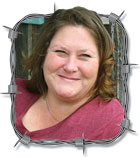 Two months ago, many farmers and ranchers were worried if they were going to be able to stay in the livestock business in the wake of hot and dry conditions that caused pastures and hayfields to turn brown. Some areas were drier than others, but no matter where you live in the Ozarks, you were watching to see what the weather forecast might bring.
Two months ago, many farmers and ranchers were worried if they were going to be able to stay in the livestock business in the wake of hot and dry conditions that caused pastures and hayfields to turn brown. Some areas were drier than others, but no matter where you live in the Ozarks, you were watching to see what the weather forecast might bring.
Rain has come to the region, thankfully, and many producers were able to get back into their hayfields for additional hay cuttings. The clover is actually pretty thick for this time of year around my place and the cows are looking full, which is a good sign.
Mother Nature may have given the Ozarks region a little reprieve from the hot, dry conditions in recent weeks, but we don’t know what the weather will do next, and as we roll into fall, many folks are beginning to wonder what winter will be like. I don’t mind the cold, but I can do without a lot of snow and/or ice in the winter months. I’m thankful my family has been in the Ozarks for generations because I don’t know if I could handle winters where snow totals for a single day are measured in feet instead of inches.
Growing up, my brothers and I were taught to look at the “signs.” A sign might be a persimmon seed, the color of a woolly worm or if the cattle are looking a little thicker haired than usual.
I had a couple of young reporters on my staff when I worked for a daily newspaper who had never heard of the spoon, fork or knife theory of a persimmon seed when it comes to predicting the weather. They were “city kids” and I sent them on an adventure to find persimmons. After they looked up what the tree and fruit looked like, they secured about a dozen persimmons. As I pulled the seeds, the cub reporters asked if they could eat the fruit. I advised them that it wouldn’t hurt them, but stopped them short of eating any; they were still a little green. I fell for that once as a child and I didn’t want them to endure the same reaction I had. After a few days of drying the seeds, I cut them open and saw a mixture of knives and spoons. Turns out my young reporters weren’t the only ones in the building who had never heard of predicting the weather with persimmon seeds because people gathered to see the seeds the rest of the day.
I still catch myself looking at woolly worms to see if they are dark or if they have a lighter ring. I’ve seen mostly dark black so far, which – if folklore holds true – means we’re in for a rough winter. That’s exactly what producers who don’t have enough hay to make it through the winter months don’t want to think about.
Then there is the ever-popular Old Farmers’ Almanac and its weather predictions.
Julie Turner-Crawford is a native of Dallas County, Mo., where she grew up on her family’s farm. She is a graduate of Missouri State University. To contact Julie, call 1-866-532-1960 or by email at [email protected].






